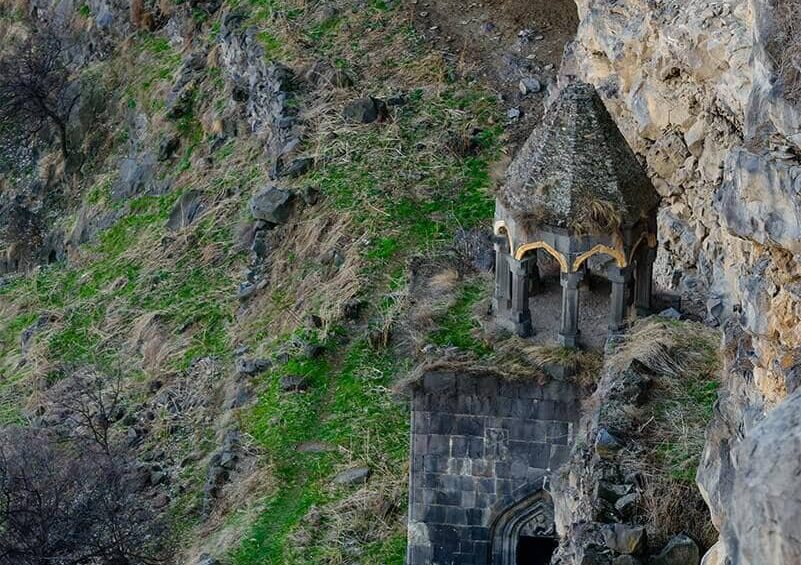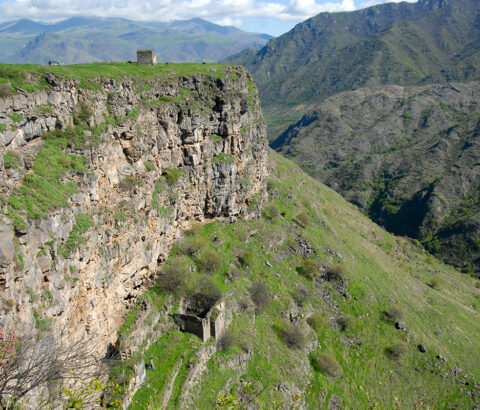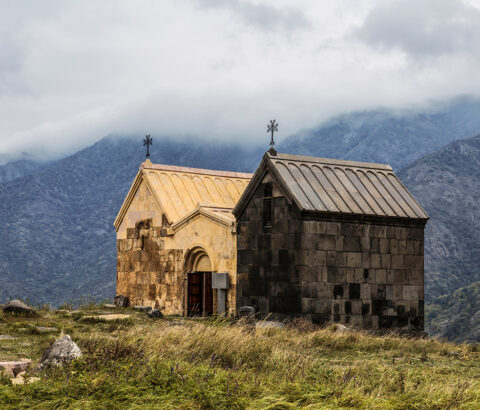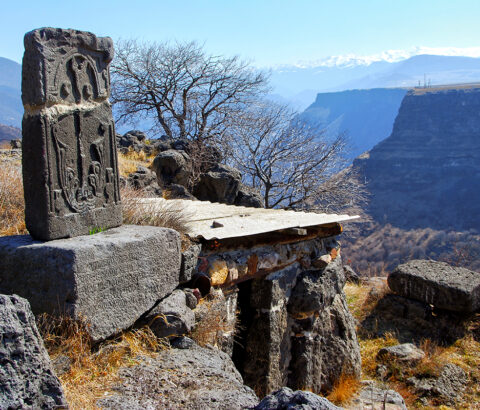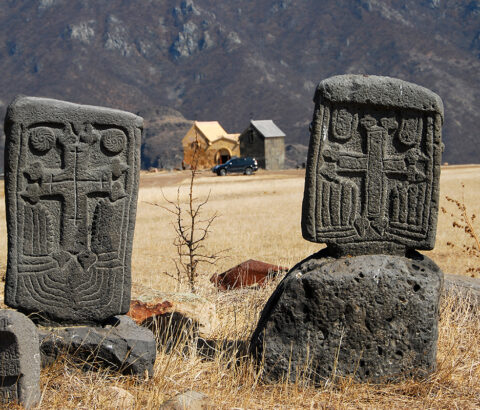The monastic complex of Horomayr is located about 3 kms southeast of the village of Odzun. Although first mentioned as early as in the 7th century, today’s surviving structures of the monastery were built through the late 12th-early 14th centuries. This unique monastery consists of two parts – the lower monastery, also known as the “Monastery in the gorge,” is situated just below the sheer cliffs on the left slope of Debed canyon, and the upper one, known as the “Monastery on the edge of the canyon,” sits on the edge of the plateau above.
According to tradition, the first church of the monastery was built in the 7th century by the Byzantine emperor Heraclius. Another legend claims that the founder of the Horomayr monastery was a Greek Christian named Vasid who had converted to the faith of the Armenian church after witnessing a miracle performed by Catholicos Hovhannes Odznetsi. He had settled in the caves on the slope of the canyon and founded the first church of the site. Thus, the monastery became known as Horomayr, from the words “horom” (referring to people of Greek/Byzantine origin) and “ayr” (cave). In the 11th century, the monastery acquired the relics of the Catholicos Peter I of Armenia, and for this, the church was given the name of St. Nshan (Holy Sign).
 Quick Info
Quick Info
What's Nearby
The main church of the lower part of the monastery, St. Nshan (Holy Sign) is a single-nave church built in 1187 by princes Zakare and Ivaneh Zakarians, and topped with a bell tower in 1290. The only entrance to the church is adorned with a high relief depicting Jesus Christ. Adjacent to St. Nshan church is another single-nave church, next to which a small chapel was built in 1201. About 25 meters north of the St. Nshan church is the St. Astvatsatsin (Holy Mother of God) chapel built in 1301, next to it there are ruins of another chapel, St. Apostle. A large number of 13th-century khachkars are found around the complex.
The upper part of the monastery that sits on the plateau above was built by the monks of Horomayr, and although it stands apart from the main complex and is somewhat secluded, it is still a part of Horomayr monastery. The “Monastery on the edge of the canyon” consists of three connected structures; two single-nave churches almost equal in size and the narthex between them create a beautiful symmetry.
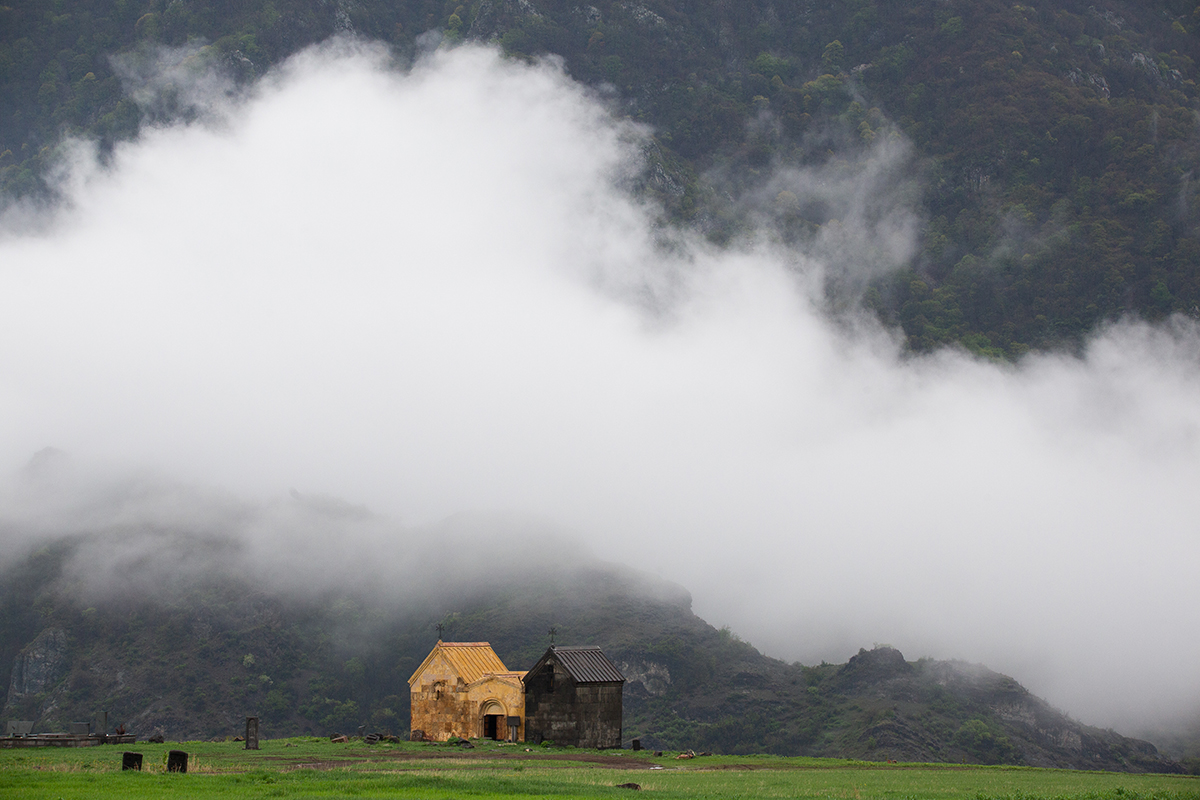
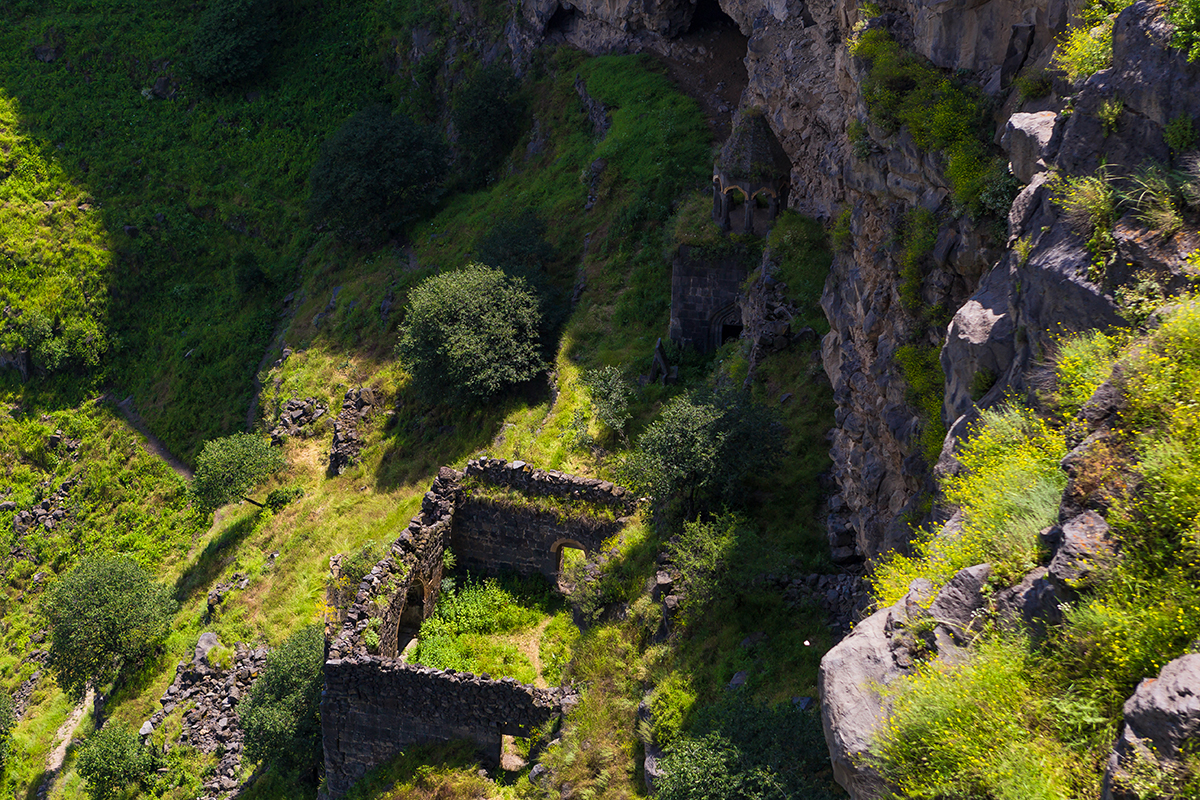
The northern church and the 13th-century narthex, which also serves as an entrance to both churches, are built with felsite stone of yellowish and brown hue, while for the construction of the southern church built in 1206 dark grey basalt stones were used. This gives the complex a rather unusual look.
The lower part of the monastic complex of Horomayr is accessible by foot only. You can hike either from the Kobayr monastery or the village of Odzun, the latter being the shortest option. A great hiking trail runs from Kobayr monastery to the village Odzun via Horomayr monastery’s lower part, offering an opportunity to not only visit important religious sites of medieval Armenia, but also enjoy stunning views of the Debed canyon along the way. This trail is available in the HikeArmenia app. Note that the upper complex of Horomayr monastery is accessible by foot, car or bicycle from Odzun village, but you cannot get there from the lower part directly.

